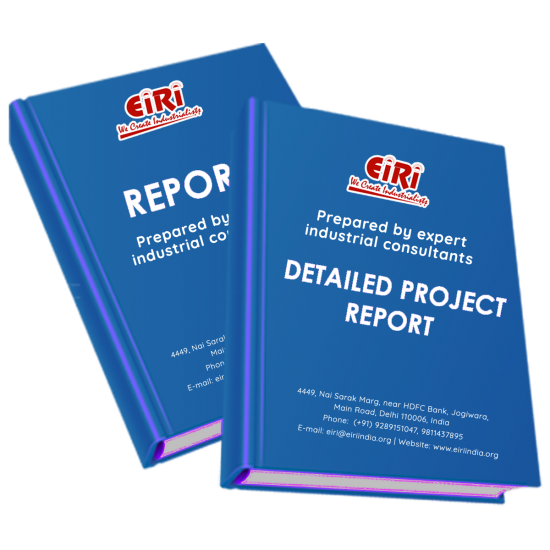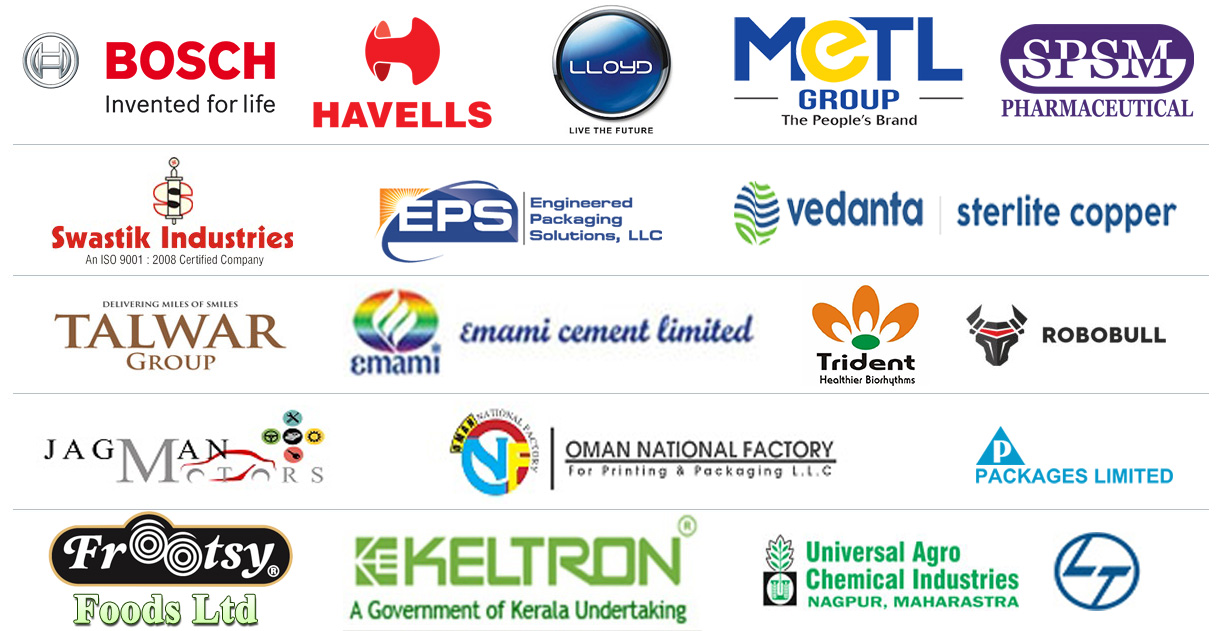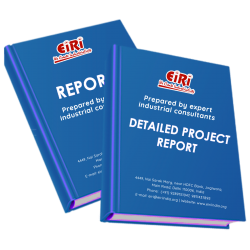Detailed Project Report on leather tanning and dry finishing plant

- More than 40 years of experience
- Managed by expert industrial consultants
- ISO 9001-2015 Certified
- Registered under MSME, UAM No: DL01E0012000
- 24/5 Research Support
Get your quesries resolved from an industry expert. Ask your queries before report or book purchase. - Custom Research Service
Speak to the our consultant to design an exclusive study to serve your research needs. - Quality Assurance
All reports are prepared by highly qualified consultants & verified by a panel of experts. - Information Security
Your personal & confidential information is safe & secure.
LEATHER TANNING AND DRY FINISHING PLANT
[CODE NO. 3050]
Leather is a material created through the tanning of hides and skins of animals, primarily cattle hide. The tanning process converts the putrescible skin into a durable, long-lasting and versatile natural material for various uses.
Leather is an important material with many uses. Together with wood, leather formed the basis of much ancient technology. The leather industry and the fur industry are distinct industries that are differentiated by the importance of their raw materials. In the leather industry the raw materials are by-products of the meat industry, with the meat having higher value than the skin. The fur industry uses raw materials that are higher in value than the meat and hence the meat is classified as a by-product. Taxidermy also makes use of the skin of animals, but generally the head and part of the back are used. Hides and skins are also used in the manufacture of glue and gelatin.
Tanning is effected by treating the conditioned hides and skins with organic, inorganic or synthetic tanning agents, the most important among them being vegetable tanning materials and basic chromium sulphate. Basic salt of aluminium, Zirconium, and iron, formaldehyde, quinone, aliphatic sulphonyl chlorides, fish oils, and synthetic polymerized materials (Syntans) are used for the production of special leathers. Tanning is an ancient art practiced in India since long before the Christian era. Up to about 1857, the Indian leather industry remained a cottage industry confined mostly to the villages. The production of semi-finished leather for export was started in South India at about that time. In 1867, the Government established the Government Harness & Saddlery Factory at Kanpur to produce vegetable tanned leather by process followed in England. In 1881, another factory, cooper, Allen and Co. was set up at Kanpur to produce vegetable tanned leather required for military footwear. Experimented trials on the production. One of chrome tanned leather were started at Madras towards the beginning of the present Century, and a course of instruction in chrome tanning was introduced in the Government School of Arts, Madras. Students trained in this institution started chrome tanneries in Chennai, Kolkata and Kanpur.
The first chrome tannery was established at Madras in 1903. The tanning industry as it exists today comprises the following four sections: organised tanneries producing vegetables and chrome tanned leathers; small-scale tanneries producing chrome tanned shoe upper leathers; small-scale tanneries producing E.I. tanned and skins; and village tanneries producing vegetables tanned leather.
The leather industry occupies a unique position in the country as one of the major export earners-presently exporting to a tune of Rs. 1250 crores and expected to be about 1800 crores by the end of the current plan period. So far as the export of leather & leather products are concerned, our major market are the USA, and the EEC in the West and USSR and GDR in the Socialist Block of Countries.
India is rich in cattle wealth, buffallo, calf leather in India's specialty leather. In India, there is abundance of traditional skills for the manufacture of leather products. At the time of independence in 1947. India's exports of raw hides & skins is reduced. The potential of leather industry was perceived by the Govt. immediately after independence. The industry was given special attention. The skills for tanning & processing of leather were revived export of raw hides & skins was discouraged Tanning facilities sprung up in different parts of the country continuously.
Now India has a good presence in world markets, domestic requirement is mostly for the footwear industry and a very small quantity for the leather products industry.
Tanning & finishing industry in India is concentrated in Madras, Panipat, Ambur, Vaniambadi, Erode, Dindigul and Trichy in Tamilnadu, Calcutta in West Bengal, Kanpur in UP & Bombay in Maharashtra. Tamilnadu accounts for tanning & finishing of over 60 percent of the hides and skins available in the country and Kanpur and Calcutta together account for 20-25% and the remaining quantity is processed in different parts of the country. Kanpur by and large specializes in tanning & finishing of buffalo hide. It is the main centre for the manufacture of harness leather, role leather and other varieties of buffalo leather.
COST ESTIMATION
Plant Capacity 100.00 sq.mt./day
Land & Building (1000 Sq.Mtr) OWN
Plant & Machinery Rs. 32.00 Lacs
W.C. for 1 Month Rs. 19.14 Lacs
Total Capital Investment Rs. 1.28 Cr
Rate of Return 22%
Break Even Point 66%
INTRODUCTION
USES AND APPLICATION
TYPES OF LEATHER
B.I.S. SPECIFICIFICATION
CLASSIFICATION OF HIDES AND SKINS
DEVELOPMENT OF TANNERY/LEATHER INDUSTRY
MARKET SURVEY
SEQUENCES IN LEATHER TANNING AND DRY FINISHING PLANT
LEATHER TANNING AND FINISHING PROCESS
DEFFERENT STAGES IN LEATHER TANNING
WASTE CHARACTERISTICS, POLLUTION PREVENTION AND CONTROL
LEATHER PRODUCTION PROCESSES
MANUFACTURING PROCESS OF FINISHED LEATHER
PROCESS IN DETAILS
PHYSICAL CHECK UP OF THE STOCK
CHEMICALS & THEIR COMPOSITIONS USED IN DIFFERENT SECTIONS
& OTHER OPERATIONS IN BRIEF
TANNING AND OTHER OPERATION FOR FINISHED LEATHER
DIFFERENT TREATMENT OF HIDES FOR FINISHED LEATHER
POLLUTION EFFECTS
OPERATING CONDITIONS FOR CHROMETANNING
SAVING IN CHEMICALS AND WATER IN DELIMING
EFFLUENT TREATMENT IN TANNERY
FLOW DIAGRAM OF COMPLETE TANNING PROCESS
PLANT LAYOUT
SUPPLIERS OF RAW MATERIALS
SUPPLIERS OF PLANT AND MACHINERIES
APPENDIX – A :
1. COST OF PLANT ECONOMICS
2. LAND & BUILDING
3. PLANT AND MACHINERY
4. FIXED CAPITAL INVESTMENT
5. RAW MATERIAL
6. SALARY AND WAGES
7. UTILITIES AND OVERHEADS
8. TOTAL WORKING CAPITAL
9. COST OF PRODUCTION
10. PROFITABILITY ANALYSIS
11. BREAK EVEN POINT
12. RESOURCES OF FINANCE
13. INTEREST CHART
14. DEPRECIATION CHART
15. CASH FLOW STATEMENT
How to Make Project Report?
Detailed Project Report (DPR) includes Present Market Position and Expected Future Demand, Technology, Manufacturing Process, Investment Opportunity, Plant Economics and Project Financials. comprehensive analysis from industry covering detailed reporting and evaluates the position of the industry by providing insights to the SWOT analysis of the industry.
Each report include Plant Capacity, requirement of Land & Building, Plant & Machinery, Flow Sheet Diagram, Raw Materials detail with suppliers list, Total Capital Investment along with detailed calculation on Rate of Return, Break-Even Analysis and Profitability Analysis. The report also provides a birds eye view of the global industry with details on projected market size and then progresses to evaluate the industry in detail.
We can prepare detailed project report on any industry as per your requirement.
We can also modify the project capacity and project cost as per your requirement. If you are planning to start a business, contact us today.
Detailed Project Report (DPR) gives you access to decisive data such as:
- Market growth drivers
- Factors limiting market growth
- Current market trends
- Market structure
- Key highlights
Overview of key market forces propelling and restraining market growth:
- Up-to-date analyses of market trends and technological improvements
- Pin-point analyses of market competition dynamics to offer you a competitive edge major competitors
- An array of graphics, BEP analysis of major industry segments
- Detailed analyses of industry trends
- A well-defined technological growth with an impact-analysis
- A clear understanding of the competitive landscape and key product segments
Need Customized Project Report?
- Ask for FREE project related details with our consultant/industry expert.
- Share your specific research requirements for customized project report.
- Request for due diligence and consumer centric studies.
- Still haven't found what you're looking for? Speak to our Custom Research Team
About Engineers India Research Institute:
Note: We can also prepare project report on any subject based on your requirement and country. If you need, we can modify the project capacity and project cost based on your requirement.
Our Clients

Our Approach
- Our research reports comprehensively cover Indian markets (can be modified as per your country), present investigation, standpoint and gauge for a time of five years*.
- The market conjectures are produced on the premise of optional research and are cross-accepted through associations with the business players
- We use dependable wellsprings of data and databases. What's more, data from such sources is handled by us and incorporated into the report
Why buy EIRI reports?
- Our project reports include detailed analysis that help to get industry Present Market Position and Expected Future Demand.
- Offer real analysis driving variables for the business and most recent business sector patterns in the business
- This report comprehends the present status of the business by clarifying a complete SWOT examination and investigation of the interest supply circumstance
- Report gives investigation and top to bottom money related correlation of real players/competitors
- The report gives gauges of key parameters which foresees the business execution





















